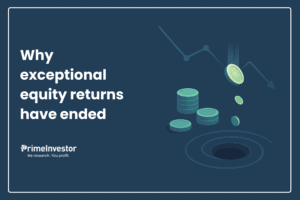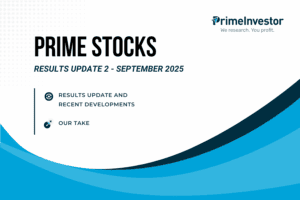Prime Portfolios are a set of eighteen unique portfolios that meet several investor timeframes and needs. Prime Portfolios are listed under Ready-to-use-portfolios in the Recommendations dropdown. These portfolios primarily use mutual funds, but where there are better-suited products such as deposits or government schemes, the portfolios include those as well. We review these portfolios every quarter and make changes, where necessary, to remove underperformers or to include any new investment opportunity or product that may come by.

If you are new to PrimeInvestor, do go through the boxed section below on how we construct Prime Portfolios and how you can use it.
Construction of Prime Portfolios
We have classified Prime Portfolios based on popular financial needs/goals you may have. The basis for many of these would be the goal’s timeframe. We have therefore segregated many of these goals further into timeframe buckets. For those looking for passive investing options, check our home page of Prime Portfolios.
Fund or instrument selection: Prime Portfolios draw from Prime Funds and mix funds with different strategies to minimize duplication within a portfolio. However, there may be a few cases where funds are outside of Prime Funds. This apart, we use other products, primarily on the fixed income side, in portfolios where they will be good options.
Asset allocation: The asset allocation in Prime Portfolios is done based on the ‘ideal’ allocation for a given timeframe or goal. But this is not cast in stone. Assess your own capacity to take risk before choosing a portfolio. These portfolios are not ‘advisory’ in nature. They are bundled MF products with a mix of equity and debt funds and fixed income options with varying strategies for diversification.
Using Prime Portfolios
Prime Portfolios are useful in the following cases:
- If you are new to mutual fund investing, or do not know how to mix funds and want a readymade basket of funds to invest.
- If you are an existing investor but have new goals and want an asset-allocated portfolio for that purpose.
- If you wish to build your own portfolio by taking cues from the asset allocation and category allocation that we use.
- If you wish to add or modify your existing portfolios by taking cues from Prime Portfolios’ construction use Prime Funds or Portfolio Review Tool. If you want help to build your own portfolio, then use our Build your own Portfolio tool to have an asset allocated portfolio with the right category mix.
If you are investing in or referring to any Prime Portfolio, note the following:
- We review these portfolios every quarter after the review of our ratings, recommendations, and Prime Funds. So, this will typically be 2-3 weeks after the end of a quarter.
- Changes may involve fund changes or individual fund allocation changes.
- In the review, where we make changes to Prime Portfolios, we will explicitly specify whether a fund needs to be exited or only SIPs stopped, and investments made so far held.
- In our review reports, we mention only those portfolios where there are actual changes or portfolios to which we wish to draw your attention on any performance. If a Prime Portfolio is not mentioned in these reports, you can take it that there are no changes.
- To track changes to a portfolio, click the ‘Follow’ button to ensure you receive alerts about the changes. Your Dashboard will also show you portfolios that have been changed when you Follow a portfolio.
- We send email and Dashboard alerts on changes only for those who ‘Follow’ a portfolio. However, we also publish a report on the blog on the same every quarter, with the detailed reasoning for changes along with action to be taken. Either way, keep note of our emails – a week or two after a quarter ends!
Some asset classes in your portfolio may have strayed from the original asset allocation as market rallies. You need to run a check on this once a year to see whether you need to rebalance, as each of you would have invested in different times. Read our explanation on rebalancing here and use our calculator to know how much to invest/redeem in rebalancing.
It is important for you to read and record our emails for all the above. So kindly make sure you find some time to do this to keep your portfolio in good shape!
Change in Prime Portfolios this quarter
In this quarter, we have made just one change to Prime Portfolios. We also have an update on some of the equity heavy portfolios.
Tax-saving portfolio
In this portfolio, we are removing Mirae Asset Tax Saver. This ELSS, like a few other Mirae funds (such as the Large Cap) has been steadily underperforming. While we usually give time for performance to pick up, the improvement has been unsteady. For example, around June of last year, the fund was underperforming the Nifty 500 TRI (we use it as a common benchmark for ELSS) and then picked up by September. But the outperformance could not sustain and it slipped again in 2024.
With this, the fund’s proportion of outperformance on a rolling 1 year return basis (over 3 years) stands at 54% as opposed to peer average of 60%. Its 3-year rolling return record still remains strong at 88% but can slip if the current trend continues.
We are not adding any new fund to this portfolio. We think the other ELSS scheme from Parag Parikh should suffice for the purposes of tax saving. With diminishing focus on tax-savings by the government, we think focusing on quality investment rather than mere tax savings is necessary.
Action required:
- Stop SIPs, if any, in Mirae Asset Tax Saver and add the same to the other scheme from Parag Parikh, if you need to invest in SIPs.
- Continue to hold all investments made and consider consolidation after 3 years of lock-in.
Performance updates
We would like you to be informed that it has become very challenging for us to even state our own performance after SEBI’s move earlier this year that restricts putting any kind of performance data on recommendations/portfolios (even historical performance), until it is run through what is called a performance validation agency. Now, for Research Analyst outfits like ours, talks are on by SEBI-appointed agencies to carry out such a validation and internal discussions are in progress. Therefore, while it is in the interest of our subscribers to show such data, please know that it may not be available on the platform until there is a regulatory framework in place (we may have to remove performance data on the platform for the equity portfolios)
That said, here is an update on performance for the equity-oriented portfolios:
- 3-5 year time frame based portfolio: With a return since inception of 15.6% (XIRR for SIP as of June 30, 2024), this portfolio has been steadily beating the blended benchmark by 0.5-1 percentage point. This isn’t easy considering the lower equity allocation and the fact that debt benchmarks cannot be beaten :-) For those holding this portfolio for a long time, Mirae Asset Large Cap (which is a hold in our call) may continue to drag performance a bit. Although we replaced it (for fresh investments) with Nippon India Large Cap, we will need to wait for some time to see if we need to clean up and consolidate the ‘hold’ funds. We will alert you when it happens.
- 5-7 year time frame based portfolio: Despite the equity orientation and a returns of 22% XIRR (SIP since inception), we admit we have struggled to deliver convincing outperformance in this portfolio. The performance of this portfolio was hit by 2 midcap funds successively - first DSP Midcap and now Kotak Emerging Equity. This time around (unlike with DSP Midcap), we did not wait too long for performance pick up and cut exposure to the Kotak fund, and thus limited the underperformance. For the portfolio, the underperformance against the blended benchmark has narrowed to about 1.5 percentage points. We are confident that the timely addition of a thematic fund a year ago (banking and finance) has helped, and will continue to help, speed up improvement. We also want you to be cognisant of the fact that this portfolio houses 2 index funds and any large outperformance cannot be expected.
- Greater than 7-year portfolio: With a return of 25% (XIRR, SIP since inception), this portfolio has kept pace with benchmark despite being stymied by 2 underperformers - Mirae Asset Largecap and Kotak Emerging Equity. The changes we made to prop returns are yielding results.
- High growth portfolio: With a 26% return since inception (SIP, XIRR), this portfolio has beaten the benchmark by 1.5-2 percentage points despite having one index fund in it. The overseas exposure has helped returns although the funds available for international investing has now become challenging, except for SIPs. Please note that in a market correction, this portfolio may be hit a bit more than the others, considering its high equity. Keep SIPs going.
- Active NRI portfolio: This portfolio has also delivered decent returns of 21.4% returns largely at par with benchmark. This despite the lower returns on the NRE deposit (debt component). The addition of an IT sector fund last quarter can be expected to support returns going forward.




2 thoughts on “Quarterly Review – Changes to Prime Portfolios”
If the Kotak Emerging Equity is underperforming and its exposure was cut from the prime folios, why is it still a prime fund with a buy recommendation?
Sir, the very fact that we cut back and did not remove means that we are giving it time. We have explained clearly that the fund has a sound portfolio but filled with stocks that have not participated much in this rally. We have also said a correction might help. However, as a portfolio, it is our job to ensure exposure is not very high to underperformers and therefore have cut back. thanks, Vidya
Comments are closed.